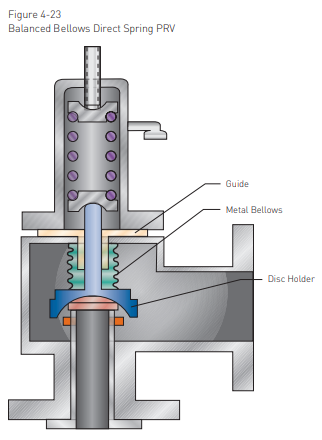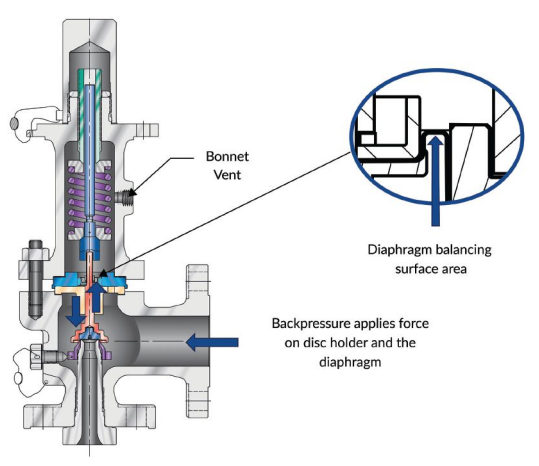I found an “oldie but goodie” article in Valve Magazine, Introduction to Pressure Relief Devices – Part 1. The author highlights the origin of pressure relief valves (PRVs) from numerous boiler explosions in the early 1900s.
The purpose of PRVs are:
…to open to relieve excess pressure, reclose and prevent further flow of fluid after normal conditions have been restored
The author shares various PRV design types used for safety relief valves, relief valves, and safety valves.
Depending on the application, a safety relief valve can be used for either a relief valve or a safety valve. Safety relief valves are classified as:
- Conventional safety relief valve
- Balanced bellows
- Pilot operated
- Power actuated
- Temperature and pressure actuated
- Conventional safety relief valves
 In an earlier blog post that was quite popular, What are Bellows in Pressure Relief Valves? I shared how these bellows are used in direct-spring PRVs to isolate back pressure from the downstream piping, such as flare header systems, into which the PRV releases overpressure.
In an earlier blog post that was quite popular, What are Bellows in Pressure Relief Valves? I shared how these bellows are used in direct-spring PRVs to isolate back pressure from the downstream piping, such as flare header systems, into which the PRV releases overpressure.
This back pressure would affect the difference in pressure between the process pressure and the spring opposing this pressure. These bellows also serve to protect internal PRV components.
Over time, these bellows can corrode or tear, resulting in fugitive emissions. In addition to safety and regulatory concerns, an undetected failure may cause significant costs in product and energy losses that could remain unnoticed for years.
 Crosby J-Series direct spring PRVs, used in air, gas, steam, vapor, liquid, and two-phase applications, avoid bellows by incorporating a flexible, reinforced elastomer diaphragm to balance backpressure applications. Any backpressure from the header system applies forces upward on the underside of the diaphragm equal and opposite to the forces also applied to the disc holder, and this balance of forces provides a balanced operation.
Crosby J-Series direct spring PRVs, used in air, gas, steam, vapor, liquid, and two-phase applications, avoid bellows by incorporating a flexible, reinforced elastomer diaphragm to balance backpressure applications. Any backpressure from the header system applies forces upward on the underside of the diaphragm equal and opposite to the forces also applied to the disc holder, and this balance of forces provides a balanced operation.
The bellows leak detection technology works by having two components–a backup piston that guarantees balanced operation if the bellows rupture and a Rosemount pressure transmitter that monitors the pressure chamber between the piston and the bellows. Any breach of containment from the bellows will create build-up pressure in the chamber.
Monitoring this pressure is a very effective and accurate way to detect bellows leakage. Additionally, it is possible to calculate the volumetric emissions going to the atmosphere through the bonnet vent by knowing the instant pressure.
Visit the Crosby J-Series Direct Spring Pressure Relief Valves page on Emerson.com for more information on dependable overpressure protection for safer and more sustainable operations.
